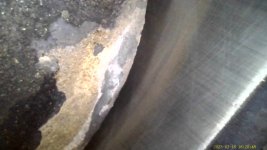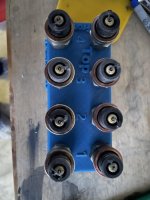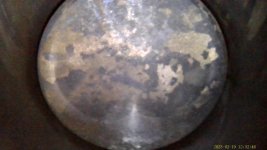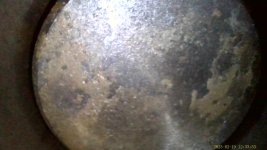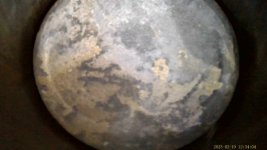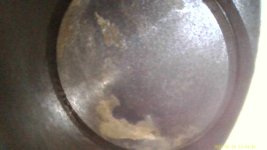I finally got everything squared away with my new O-320 install (or so I thought) and took my first flight with it today. The ground runs earlier in the day had been uneventful, with function and leak checks going fine. Shortly after initial takeoff my engine monitor alarm started going off for CHTs exceeding 400 dF. This was accompanied by a couple pops a few seconds apart. I reduced power and continued the climb out without any detectable loss of thrust, and CHTs came back down with the reduced throttle setting.
After I got it back on the ground I pulled all the plugs and found the bottom plugs fouled quite badly, to the point that I suspect they were grounding out. I also scoped the cylinders and all looked normal save for one spot on the edge of the piston face of #4. Pictures of the plugs and the piston are attached, as well as the savvy link for the engine monitor data.
https://apps.savvyaviation.com/flights/6630447/55228b29-cb24-4fee-98c7-f00b726832bc
The engine is a carburteted O-320 with 10:1 pistons, but otherwise stock. Two slick magnetos timed to 25* BTDC and fine wire plugs. Fuel flow on takeoff peaked at 12 GPH at approximately 2200 RPM before I pulled the throttle back to control the temperatures.
I suspect the popping at full throttle was a result of the plugs fouling shortly after takeoff and unburnt mixture getting into the exhaust. Would this have also contributed to the high CHT, or is that going to be more due to 25* timing being a bit hot for the compression I'm running?
My planned actions for tomorrow are to clean and reinstall the plugs, and retime to 20* BTDC. Anything else I should be considering?
After I got it back on the ground I pulled all the plugs and found the bottom plugs fouled quite badly, to the point that I suspect they were grounding out. I also scoped the cylinders and all looked normal save for one spot on the edge of the piston face of #4. Pictures of the plugs and the piston are attached, as well as the savvy link for the engine monitor data.
https://apps.savvyaviation.com/flights/6630447/55228b29-cb24-4fee-98c7-f00b726832bc
The engine is a carburteted O-320 with 10:1 pistons, but otherwise stock. Two slick magnetos timed to 25* BTDC and fine wire plugs. Fuel flow on takeoff peaked at 12 GPH at approximately 2200 RPM before I pulled the throttle back to control the temperatures.
I suspect the popping at full throttle was a result of the plugs fouling shortly after takeoff and unburnt mixture getting into the exhaust. Would this have also contributed to the high CHT, or is that going to be more due to 25* timing being a bit hot for the compression I'm running?
My planned actions for tomorrow are to clean and reinstall the plugs, and retime to 20* BTDC. Anything else I should be considering?
Attachments
Last edited:



